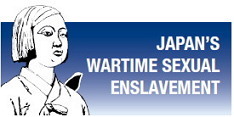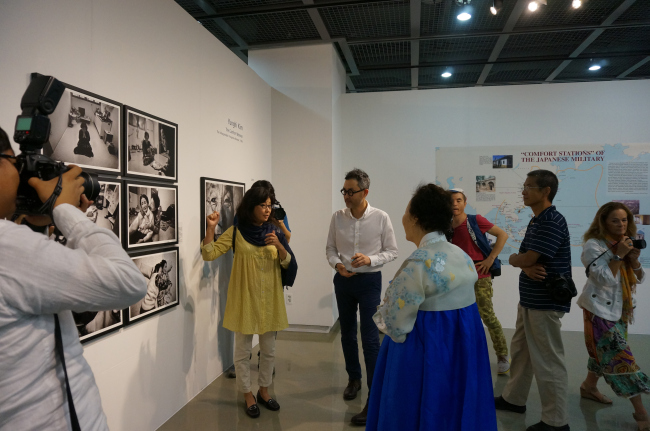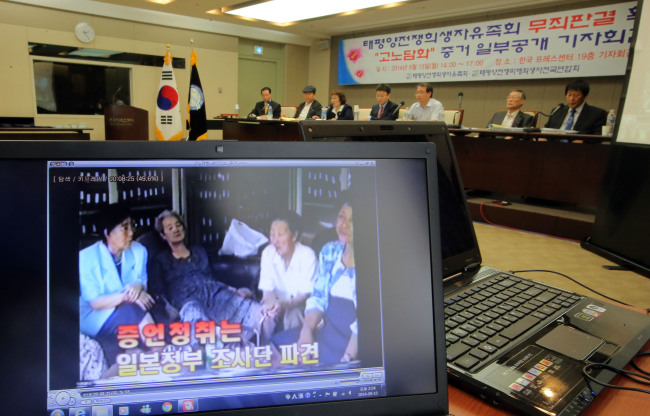To document, remember and educate
Korea seeks UNESCO listing of records on Japan’s wartime sexual slavery
By Claire LeePublished : Sept. 17, 2014 - 21:01
The following is the ninth in a series of articles on Japan’s wartime sexual enslavement of Asian women on the occasion of the 61st anniversary of the foundation of The Korea Herald on Aug.15. ― Ed.
Korean-born, U.S.-based photojournalist Kim Yung-hi first visited the House of Sharing, the residence for former “comfort women” in Gwangju, Gyeonggi Province, in 1996, to capture the daily lives of the surviving victims of Japan’s wartime sexual slavery.
The candid portraits of the women were featured in the Asian edition of Time magazine in the same year. Almost 20 years have passed since then, and Kim’s photographs are being shown again at this year’s on-going Daegu Photo Biennale in Daegu.
Time magazine in the same year. Almost 20 years have passed since then, and Kim’s photographs are being shown again at this year’s on-going Daegu Photo Biennale in Daegu.
The black-and-white photographs, which capture textured visuals of the aging victims’ wrinkles and poignant facial expressions, are still just as moving as they were 18 years ago. But only one of the many women who were photographed in 1996 is still alive. The surviving victims still haven’t received the compensation they have been demanding from the Japanese government.
“It is sad because the issue still hasn’t been solved and only one of the women that I first met back in 1996 is still alive,” Kim said at the exhibition in Daegu last week.
Korean-born, U.S.-based photojournalist Kim Yung-hi first visited the House of Sharing, the residence for former “comfort women” in Gwangju, Gyeonggi Province, in 1996, to capture the daily lives of the surviving victims of Japan’s wartime sexual slavery.
The candid portraits of the women were featured in the Asian edition of
 Time magazine in the same year. Almost 20 years have passed since then, and Kim’s photographs are being shown again at this year’s on-going Daegu Photo Biennale in Daegu.
Time magazine in the same year. Almost 20 years have passed since then, and Kim’s photographs are being shown again at this year’s on-going Daegu Photo Biennale in Daegu. The black-and-white photographs, which capture textured visuals of the aging victims’ wrinkles and poignant facial expressions, are still just as moving as they were 18 years ago. But only one of the many women who were photographed in 1996 is still alive. The surviving victims still haven’t received the compensation they have been demanding from the Japanese government.
“It is sad because the issue still hasn’t been solved and only one of the women that I first met back in 1996 is still alive,” Kim said at the exhibition in Daegu last week.

The photo exhibition, titled “Women in War: Memory of Truth,” is one of the many efforts to document the victims’ experiences and to bring more attention to the issue.
The Korean government recently announced that it would apply for a UNESCO Memory of the World designation for documents and other materials related to the Korean victims of Japan’s wartime sexual slavery. The Ministry of Gender Equality also plans to support artists who wish to produce films or plays based on the victims’ stories.
“Another important aspect of (applying for UNESCO designation) and document the victims’ experiences is to educate,” said Kim Hee-jung, the Minister of Gender-Equality. “We will use these documents to educate the public so the same tragedy does not happen again in future.”
The movement to document the victims’ stories is closely linked to the decreasing number of the surviving victims due to old age. Some 200,000 women, mostly from Korea and China, were forced into sexual slavery by the Japanese during World War II. But there are only 54 victims, including Lee Yong-su, the only survivor among the ones featured in Kim’s photographs, remaining in South Korea.
“The surviving victims, too, think about what would happen after they die,” said Kim Dong-hee, the Secretary-General of the Korean Council for the Women Drafted for Military Sexual Slavery by Japan.
“That is why some of them openly pledged to donate any funds they receive in legal compensation from the Japanese government, either posthumously or while they are still alive, to aid wartime rape victims worldwide. They want their experiences and activism to make a difference even after their deaths.”
UNESCO’s Memory of the World program was launched back in 1992, to preserve valuable documentary heritage in various parts of the world.
Currently, South Korea holds 11 Memory of the World registers, including the original manuscript of the Korean writing system, “Hunminjeongeum,” and “Uigwe,” a collection of royal protocols of the Joseon era (1392-1910), which display both text and hand-drawn illustrations of significant rites and ceremonies of the royal family, including banquets and weddings.
While there are UNESCO-designated documentary properties that date back to as early as the 11th century, some of the listed documents are from the 20th century and closely associated with wartime history, just like the materials related to victims of Japan’s wartime sexual slavery.
Such documentary properties include the diary of Anne Frank, the documents related to the construction and fall of the Berlin Wall and the Two-Plus-Four Treaty of 1990, as well as the handwritten text and the radio recording of the Appeal of 18 June ― the famous 1940 speech by Charles de Gaulle after the fall of France.
Gender-Equality Minister Kim said the Korean government is also trying to collect documents related to the former Japanese soldiers who witnessed the wartime atrocities against women.
On Monday, an important documentary property related to Korean victims of Japan’s sexual enslavement was unveiled to the public in Seoul.

A Korean NGO revealed video footage of interviews conducted by the Japanese government with former “comfort women” in Korea back in 1993. The NGO, named the Association for the Pacific War Victims, argue that the 1993 Kono Statement was written partly based on these interviews.
In the 17-minute video revealed on Monday, a total of five Japanese individuals, including government officials and an interpreter, are interviewing two Korean victims of Japan’s wartime sexual enslavement ― the late Kim Bok-seon and Yoon Soon-man ― about their experiences during the war.
According to the NGO, the Japanese officials interviewed a total of 16 Korean victims during their visit to Korea in 1993, but only two of them are still alive today.
The Kono Statement, in which then Japanese cabinet secretary Yohei Kono acknowledge and apologized for the Japanese government’s sexual enslavement of women during the first half of the 20th century, was reviewed by a team of experts appointed by the Japanese government earlier this year.
The Japanese panel in June announced that they had concluded that the Kono Statement was a result of a “diplomatic haggle” between Tokyo and Seoul, and was not made solely based on Tokyo’s own investigations and judgment.
Yang Soon-im, the president of the NGO, said the organization did not share the footage with the public for the past 21 years upon request from the Japanese government. “But we decided to unveil the interview it after the Japanese government openly tried to undermine the credibility of the Kono Statement. We have the proof that they are lying.”
Yang said her organization plans to gather all of the relating documents they have and publish them as a book, and is planning to mail a copy to the U.N.
The NGO also has a longer version of the interview footage, which they will consider screening in public depending on Tokyo’s future stance on the credibility of the Kono Statement, Yoon said.
By Claire Lee (dyc@heraldcorp.com)


![[Exclusive] Korean military set to ban iPhones over 'security' concerns](http://res.heraldm.com/phpwas/restmb_idxmake.php?idx=644&simg=/content/image/2024/04/23/20240423050599_0.jpg&u=20240423183955)




![[Pressure points] Leggings in public: Fashion statement or social faux pas?](http://res.heraldm.com/phpwas/restmb_idxmake.php?idx=644&simg=/content/image/2024/04/23/20240423050669_0.jpg&u=)

![[Herald Interview] 'Amid aging population, Korea to invite more young professionals from overseas'](http://res.heraldm.com/phpwas/restmb_idxmake.php?idx=644&simg=/content/image/2024/04/24/20240424050844_0.jpg&u=20240424200058)








